
- Posted on
- • July 12, 2018
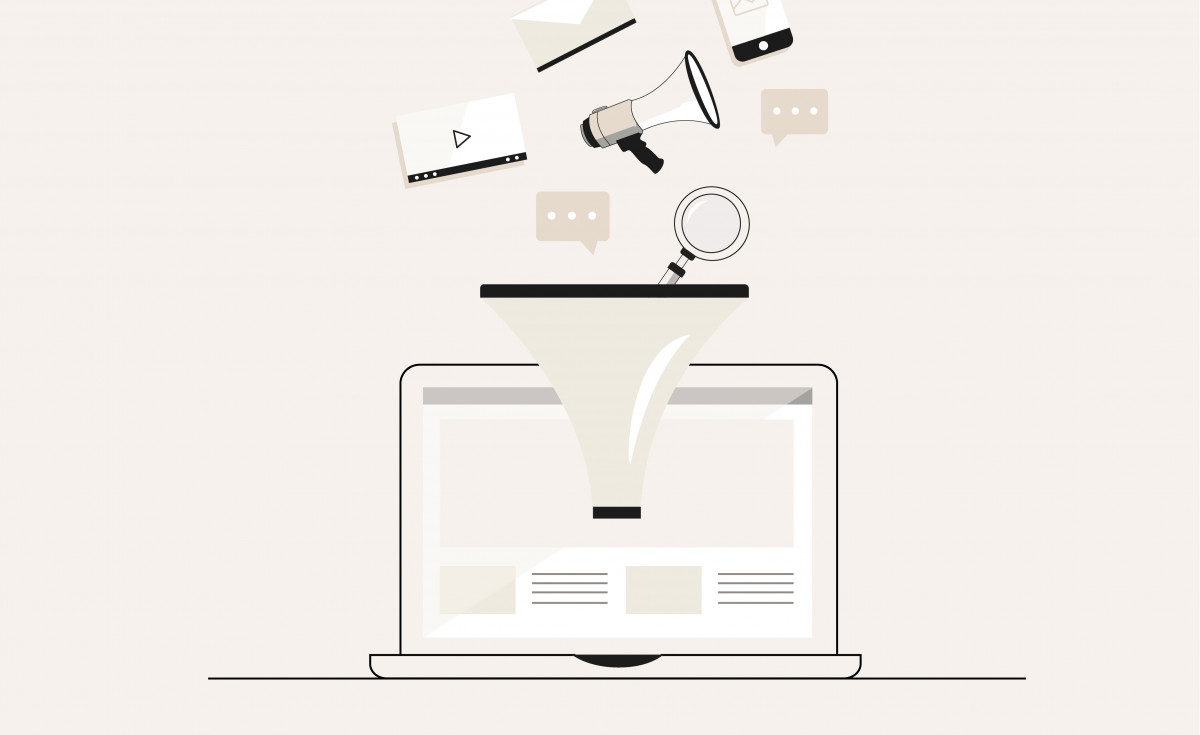
Forrester estimates B2B ecommerce will top a trillion dollars and account for 12.1% of all B2B sales by 2020. That’s a lot of opportunity for your online B2B store. Once you get business buyers in the door of your online store, increase your B2B conversion rates by helping them find what they’re looking for swiftly and then get them out the door quickly. Here are some features and functionality to incorporate:
Personalization
In order to increase B2B conversion rates, give your customers the star treatment with a personalized dashboard that displays their recent orders, relevant products, and timely promotions. You can set up different account groups based on order volume, business niche, or other preference, then serve each group with custom experiences tailored specifically for them. Offer rewards such as custom pricing, early product availability, invoicing options, or enhanced customer service.
For an example of how this can work, see how easy it is for customers to use the Rapid Reorder feature on Albany County Fasteners.
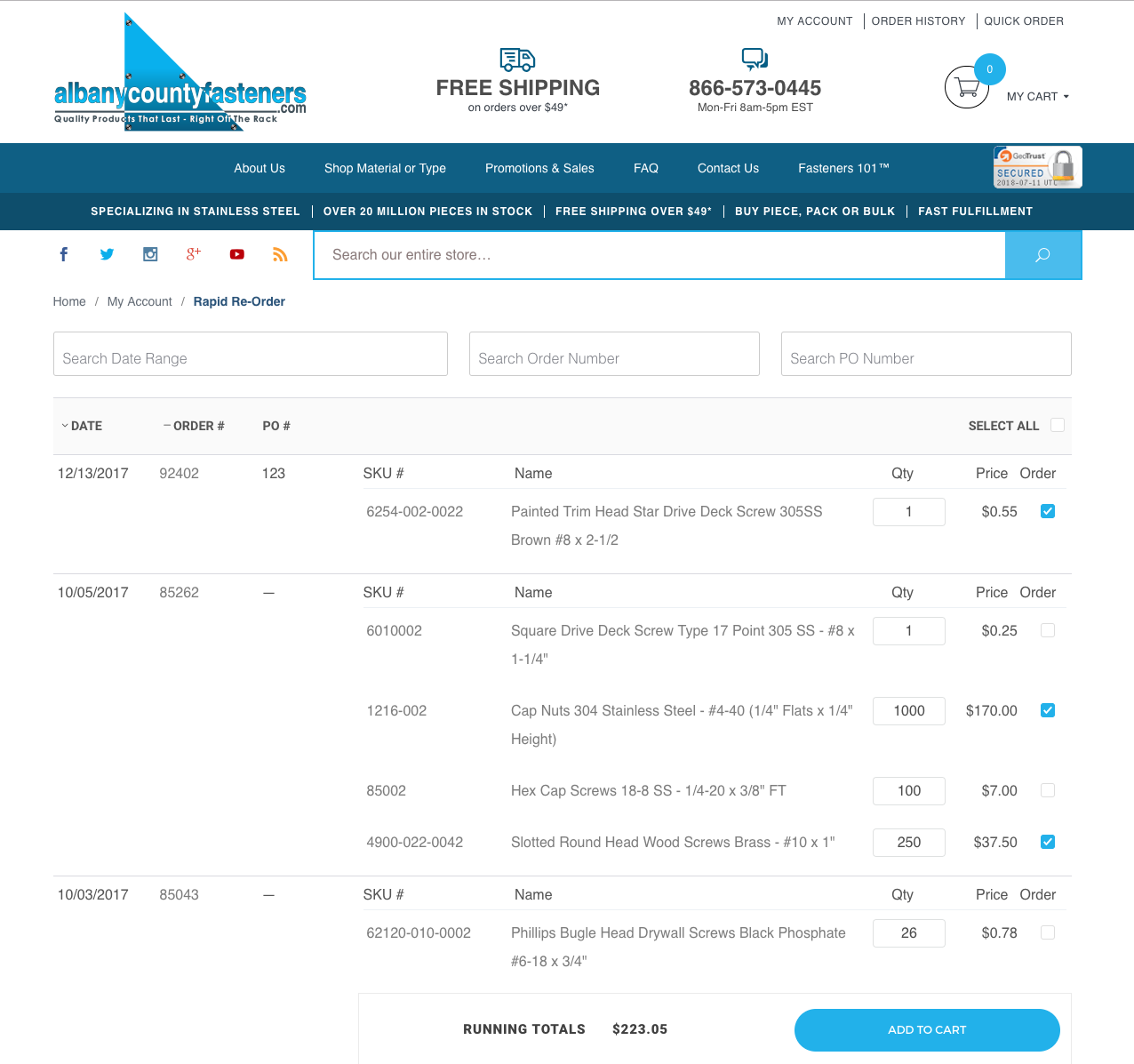
Site Search & Product Filtering
For consumers, shopping is often a fun pastime. However, B2B customers are often in the “let’s get this job done” mindset. Setting your site up with powerful filtering and categorization will help them find what they are looking for faster and increase B2B conversion rates. But don’t assume they always know exactly what it is that they’re shopping for – or that they always have to stick to a strict budget. Incorporating Suggested Products functionality can increase upselling and cross-selling opportunities.
Take a look at how IDWholesaler suggests new products to add to Your Bundle:
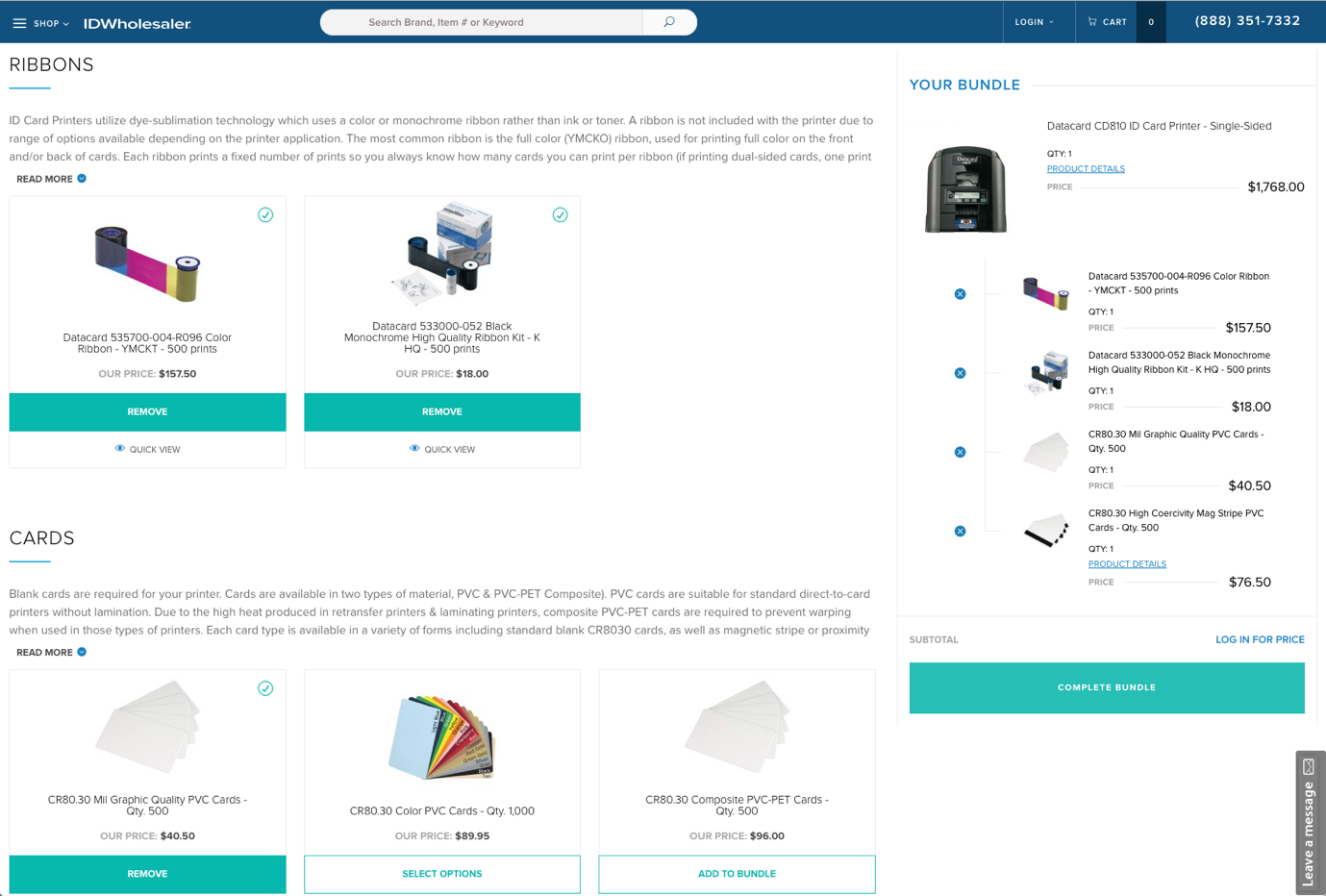
Integrate with ERP and OMS
If there is one thing B2B customers HATE it’s finding out too late that an order can’t be fulfilled because the product is out of stock. Be prepared for backlash, including canceled orders and nasty product reviews as these can hurt B2B conversion rates. Avoid that by connecting your store with your enterprise resource planning or operations management system. Providing accurate inventory levels will reduce customer service issues and major headaches. Be proactive and give customers a “heads up” when inventory levels are low – it will create urgency for them to buy. Plus, synching customer and order data provides you with opportunities for marketing specific products to them – either when stocks are low or too high.
Make Ordering Easier
Whether B2B customers are buying a specific part or reordering items in bulk, they always want to glide through the checkout process. Make sure your site has this functionality:
- Quick Order – This feature allows customers to add items by entering specific SKUs. Think print cartridges, car parts, or other consumables. They know what they want. Make it easy for them to get in and get out.
- Multi-Add – Present a product matrix with the ability to select multiple products with varying quantities that let customers Add All to Basket. More purchases, less time.
- Speedy Checkouts – With credit card wallets such as Miva Pay, you can securely save customer information such as shipping, billing addresses, and payment info. Business customers may also want invoicing options or to save multiple payment cards.
Mobile Optimization for B2B Conversion Rates
Don’t fall into the trap of thinking mobile shopping is just for soccer moms. Today B2B product research is done on job sites, at the airport, on sales calls, and even at brick-and-mortar stores when their product selection is underwhelming. Boston Consulting Group estimates some 70% of B2B buyers increased mobile usage significantly over the past two to three years. By 2020, they estimate that mobile usage per B2B worker will increase by as much as 50% (from two hours a day to three).
More and more customers are clicking the buy button on mobile devices, particularly if they’ve already created an account and you’ve made the ordering easy for them. Keep this in mind: If potential customers have a poor experience while they’re researching, they are more likely to move to a competitor’s site when they’re ready to purchase. Creating an online store that’s fully responsive on any mobile device is easy on the right platform.
Think you need separate stores for your B2C and B2B customers? Think again. With Miva, you can manage your B2C and B2B customers on the same website.
Work Together: A collection of industry updates, insights, and resources designed to help independent sellers scale and support our community during the coronavirus pandemic.

About The Author
Elisa Williams
Elisa Williams is a journalist and communications strategist who combines storytelling with solid research and analysis. A contributing author to the Miva Blog, Elisa has written for a wide array of consumer, business and technology publications, including Newsweek, Real Simple, Computer Life and Inc. Her marketing and content development work includes supporting technology companies that specialize in ecommerce, financial services and big data.


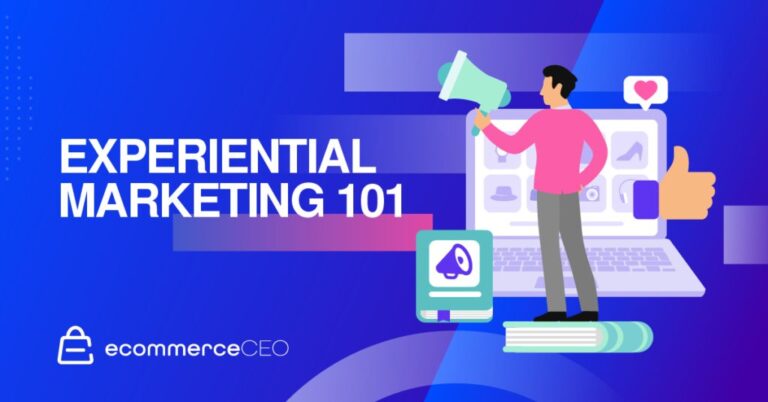


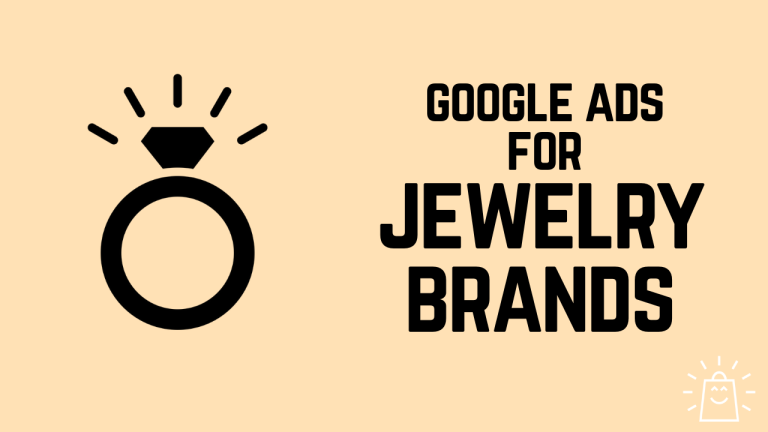
![What Is Change Management for the Digital Shelf? [Download] | Salsify](https://thegateway.net.au/wp-content/uploads/2022/02/what-is-change-management-for-the-digital-shelf-download-salsify.png)